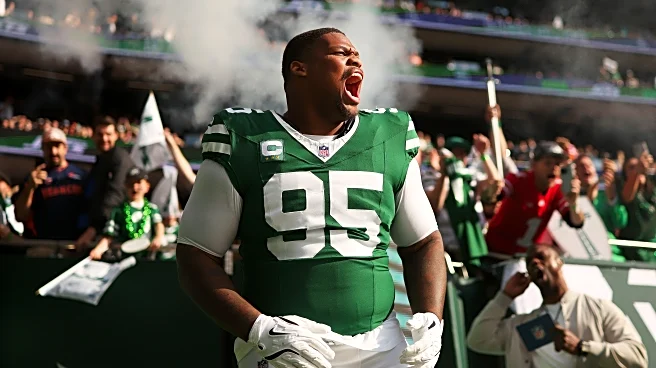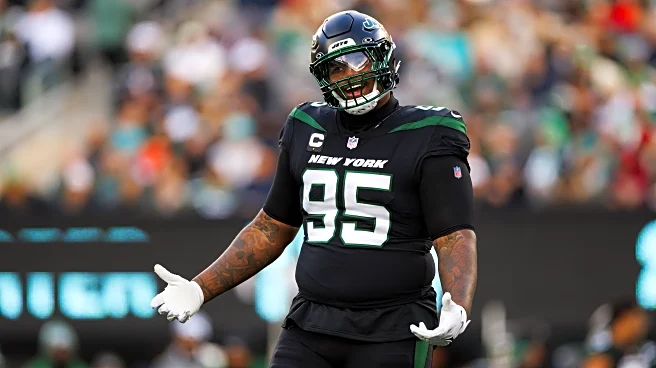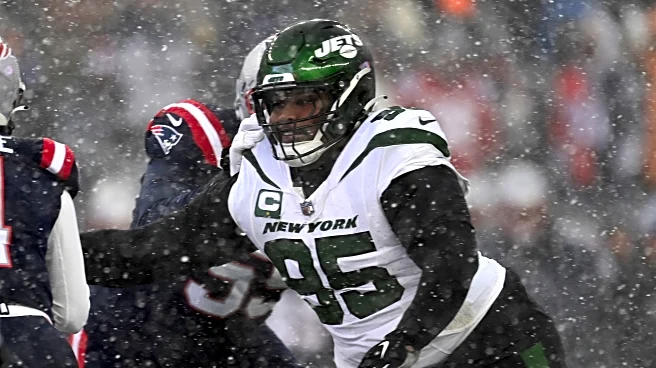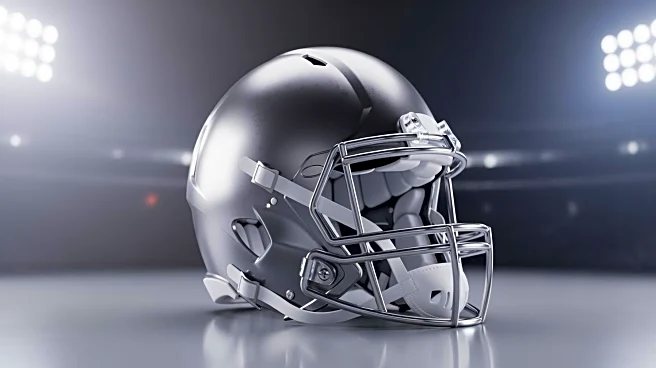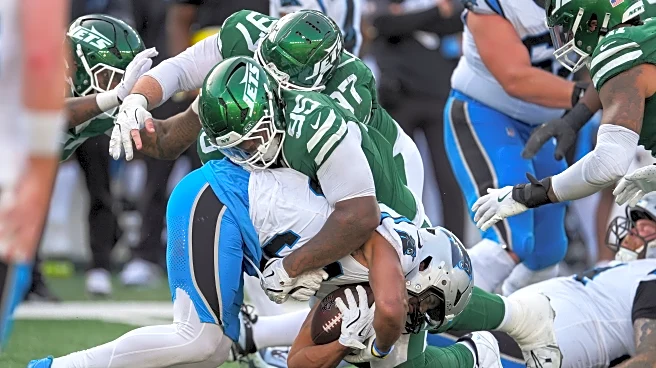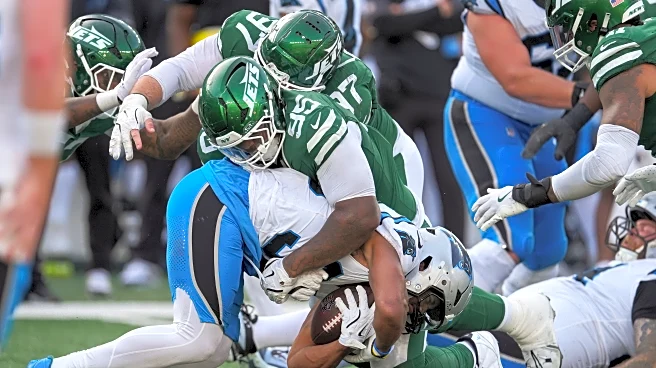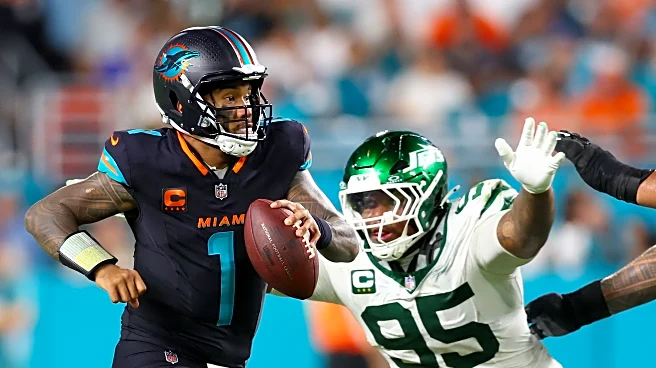Editor Note: We’re all still processing the tragic passing of Marshawn Kneeland. You can view the reported details of what happened here, and we will cover any news-worthy developments down the road if there are any. If you are struggling with any mental health issues, visit here for resources to help. We are now returning to our regular coverage of the Dallas Cowboys season.
It isn’t often that we talk about players getting renewed hope for their career by going to the Jets, but that may be just
the case for Mazi Smith. The former first-round pick back in 2023 had his Cowboys tenure cut short on Tuesday, dealt to the Jets in a trade that netted his former team a fellow defensive tackle, star Quinnen Williams. While many are focused on Williams, and understandably so, the move of Smith marked an unfortunate yet inevitable end to his tenure in Dallas.
Smith represented the first defensive tackle the Cowboys had drafted in the first round since Russell Maryland all the way back in 1991. A hulking beast at Michigan, Smith played at a listed 337 pounds and trimmed down to 323 pounds for the draft. One of the most stout run defenders in college his final two years, Smith’s selection by Dallas felt like the Cowboys finally investing in their run defense.
Two years later, when Jerry Jones tried to explain why he traded away all-world pass rusher Micah Parsons for Kenny Clark and some picks, he blamed it on a run defense that was still really bad.
While that’s hardly the full story behind the decision to trade Parsons, it’s true that the run defense was – and continues to be – a problem. Smith failed to change that, and his well-documented struggles on the field combined with a high draft pedigree led many fans to cheer his departure.
Let’s take a look at what went wrong.
When Smith was first drafted to Dallas, his fit was obvious. A physical freak, Smith had been the linchpin for an elite Wolverines defensive line, flashing his otherworldly power and strength week in and week out. Dane Brugler of The Athletic even said in his scouting report that Smith “might never light up the stat sheet, but…flashes pass rush potential.” The consensus was that Smith can be a dominant run-stuffing nose tackle.
Almost immediately upon being drafted, though, Smith was asked to cut his weight down under 300 pounds. Dan Quinn, then the defensive coordinator, wanted to bank on that pass rush potential and alternate Smith between the 3-technique and 1-technique spots.
Smith obliged, but it impacted his performance as a rookie. In addition to learning a new scheme and playing against higher caliber offensive linemen than in college, Smith was also figuring out how to play the way he always had without 30 pounds of the mass he had in college.
At the conclusion of his rookie year, Quinn left for the Commanders head coaching job, and Mike Zimmer came in to run the defense. One of the first things Zimmer did, with respect to Smith, was tell him to get back to the weight he was comfortable at in an effort to unlock his potential.
Once again, Smith obliged. He ended up in the range of 320 and 325 pounds for the 2024 season, still not as big as he was in college but with much more size and mass then he had under Quinn. And Smith started to show some flashes on the field. He finished second among the team’s defensive tackles in both pressures and run stops, and his 2.7 yards average depth of tackle was third-best of any Cowboys defensive lineman last season.
A new coaching staff brought a new defense, though, with Matt Eberflus taking over. While running a different scheme from Quinn, he prefers similar body types along the defensive line. So, once again, Smith was asked to trim his weight. And once again, Smith was tasked with playing a hybrid role, thus necessitating his smaller frame.
Smith looked bad in training camp and preseason. He played so poorly that the coaching staff made him a healthy scratch for the first two games of the year, and Brian Schottenheimer cited consistency as a reason. Ironically, inconsistency in coaching expectations is what partially led to Smith’s inconsistency on the field, too.
Now, he’s a Jet. Head coach Aaron Glenn and defensive coordinator Steve Wilks haven’t had much success this season, but they’ve both built sterling track records as defensive coaches in the past. And for Glenn specifically, he has a unique reference point for Smith from his days running the Lions defense.
Alim McNeill was a third-round pick out of N.C. State for the Lions in Glenn’s first year there. Playing around the 320-pound mark, McNeill was essentially only for run downs. Glenn let him thrive in that role and, two years later, McNeill would go on to change his diet and shed 13% of his body fat. While still keeping his overall weight in the same area, McNeill was able to get faster and more agile to unlock his pass rush potential without sacrificing his run defense.
At the time, Glenn was quoted as praising McNeill’s dedication to changing his body without jeopardizing his existing skill set:
“You’ve seen his body, also, the way he’s transformed himself, as far as his weight as far, as his habits, the way he studies. So, to me, I like the fact that he was able to play nose and three. I think we’ll continue to do that. He’s serious about football, man. Like this guy is serious about how he is going to go out there. He’s serious about how he wants to be perceived by everybody also.”
McNeill is now one of the better defensive tackles in the league, and continues to thrive even in Glenn’s absence. A similar type of mentality – and, frankly, any level of support – might do wonders for Smith. It may not have worked out in Dallas for Smith, but may find the kind of environment where he can thrive in the future.



